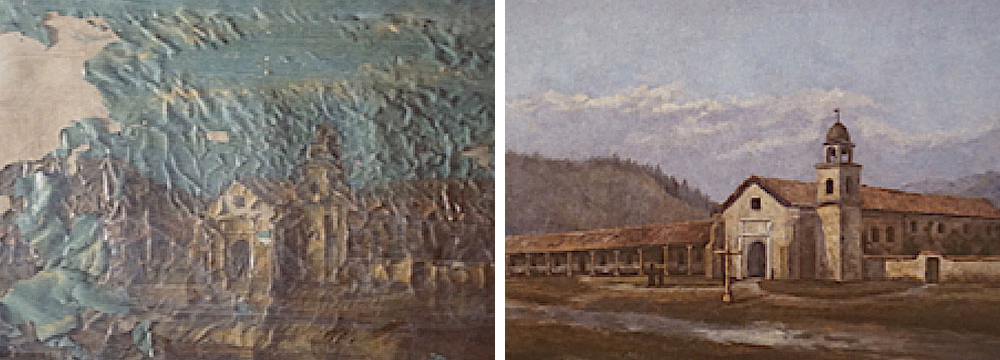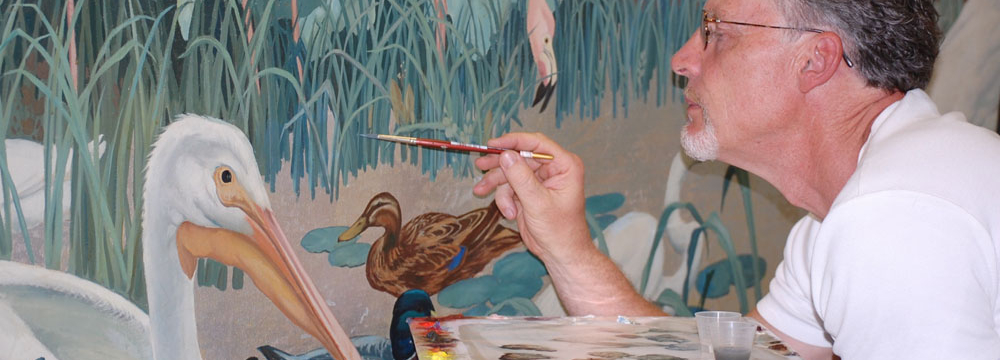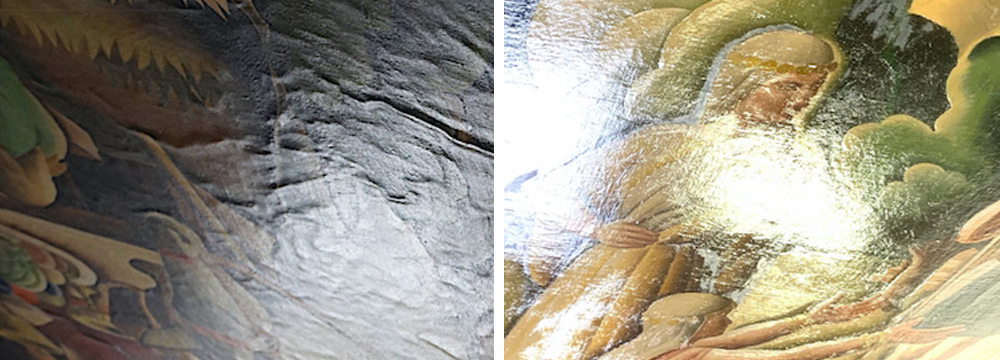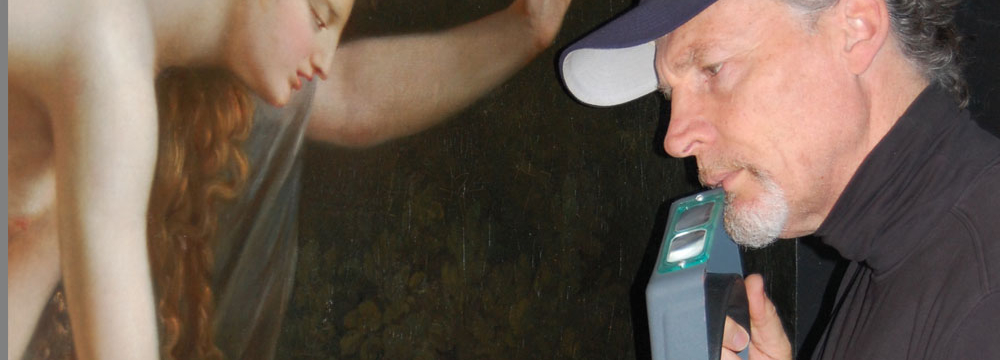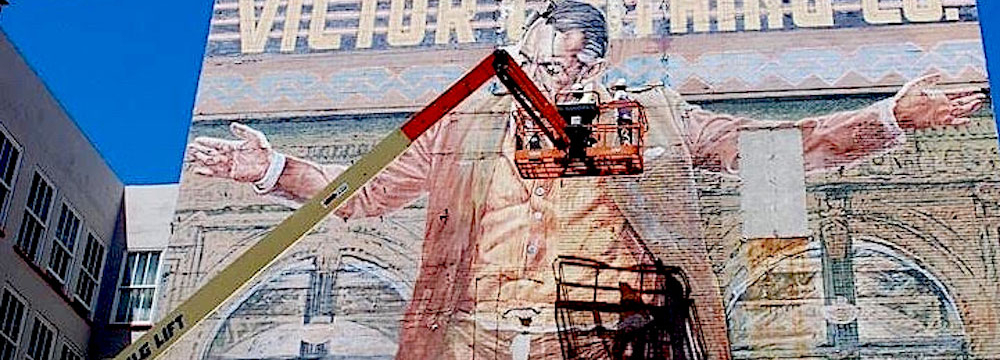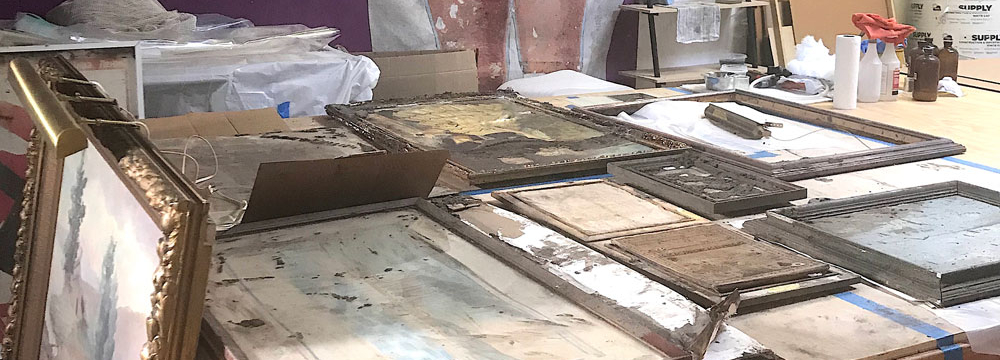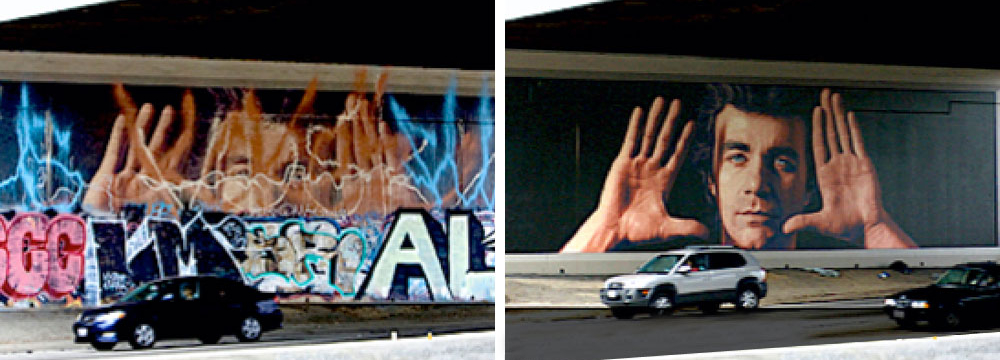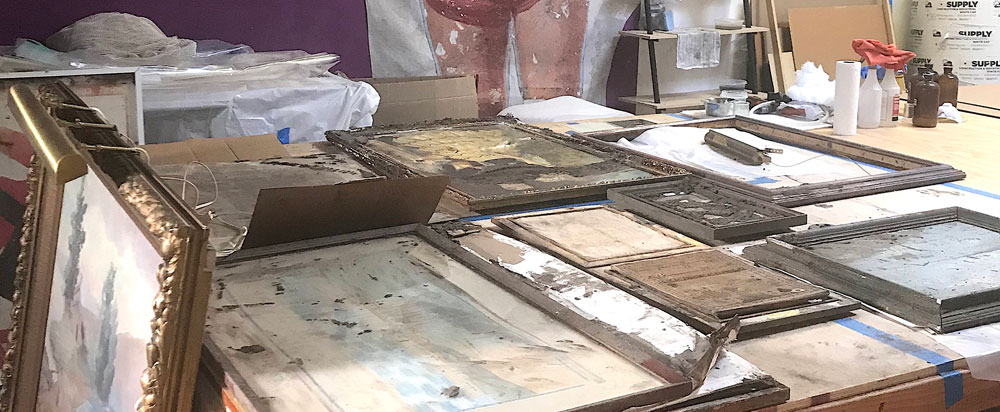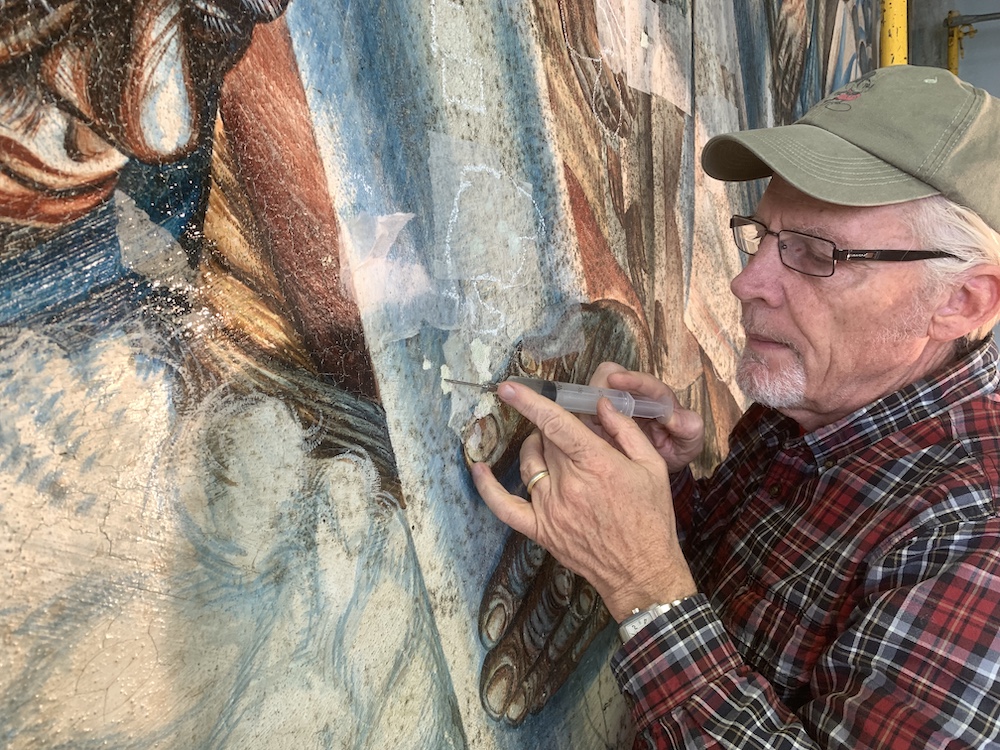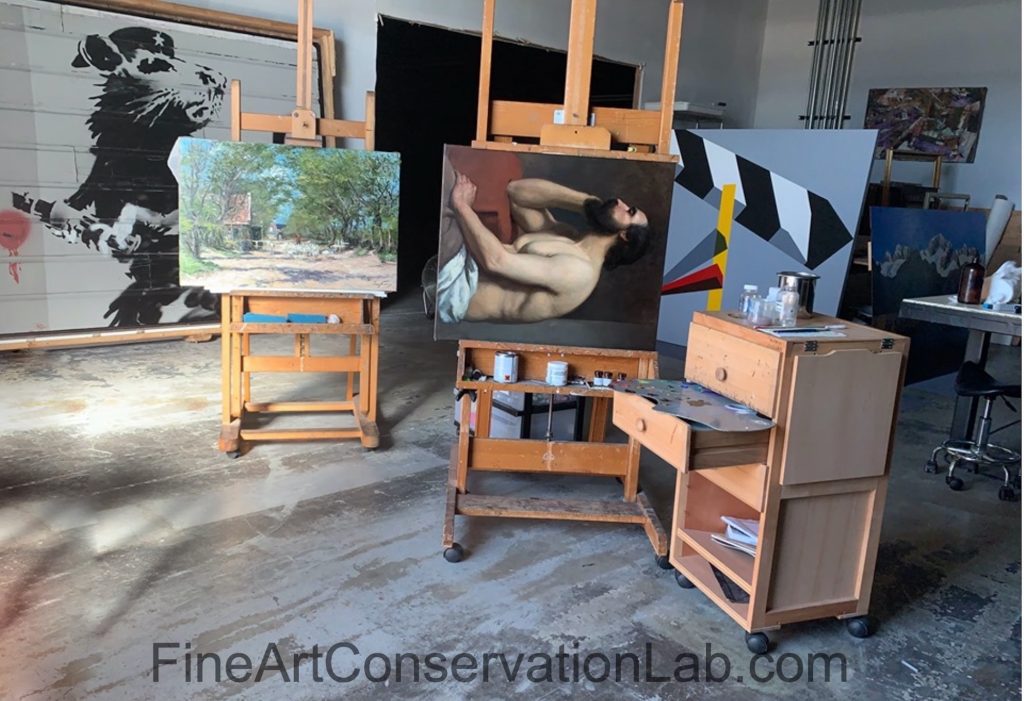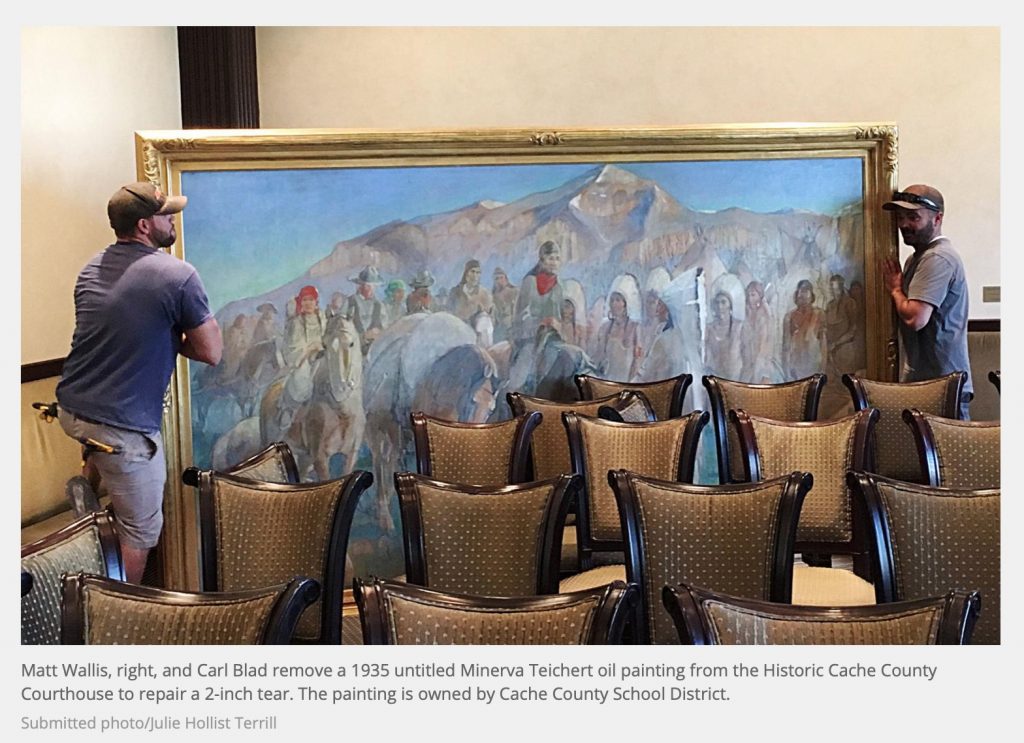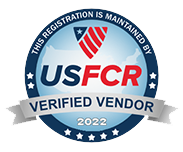A quick client’s testimonial in Orange County, CA for the restoration of a family heirloom painting. But, was it worth it? What is junk and what is a treasure? Is it authentic? What is something worth? This is the mystery and business of collectibles, antiques, memorabilia and art industry and the appeal behind the Antiques Roadshow. As you might imagine, just anybody’s opinion about what you have will NOT be sufficient, appropriate nor probably accurate information. See this video of some examples or heirlooms saved for future generations, some nice stuff from Europe and a celebrity guest in the lab!!
This article and video are syndicated publications. See end of article for “What does syndication mean?”
Here is the personal story of a client of mine about being involved with Antiques Roadshow. “Participating in the whole process and affair is quite interesting. It is pretty well organized, in spite of all the people. It takes about 2 hours, start to finish, of standing in lines. It might be disappointing to you in that they may not have an appraiser who is specialized in your item after you’ve gone to all the trouble to show up. I took a painting in to be evaluated and the appraiser actually thought the portrait of the Russian Tsar was of English Prince Edward. Amazing. The appraiser did not really “get” the idea that the value of the painting lies in the history of this person, a painting actually “of the moment” of the Russian Revolution. She kept reiterating that the “condition” of the painting was not good (it had been bayoneted, shot, ripped from its frame, rolled up and smuggled to safety). So, actually the whole experience was pretty disappointing for me, also because the Antiques Roadshow is severely prejudiced and really emphasizes American pieces.”
The value of an antique or work of art, of a collectible or item of memorabilia can have an impact on people for lots of reasons, as you might guess: family history items document a family’s heritage and legacy and therefore contain strong emotional value that probably cannot be insured; Memorabilia items document our lives, loves and experiences like our favorite team or movies or movie stars or cars. The memorabilia sales industry is all about “investing” in those memories. And, of course, investing in vintage art and antiques has been a popular asset class for millennia. Many items, both collectible and memorabilia, may have important historical value and may be of interest to other people in a locale, region or nation. Collectibles can be an investment or something that “holds” our memory.
So, given that an item may have tremendous emotional power, significant historical importance or a solid financial value… what is something worth? Consider these questions about the items for which you are the “curator.” 1. Can your treasured item be scheduled on an insurance claim in case of damage or loss? Is it insurable? (a painting, yes… vintage family photos, no?) 2. If the building were going up in smoke, would you be heartbroken about loosing which of your items? 3. If your item is damaged, will it be worth restoring? Would you restore it even if the financial value was less than the appraised value because it has emotional or historical value? 4. Is your item valuable to others you know (are you a caretaker)? 5. Are you aware that the financial valuation (appraisal) will be different in the case of insurance coverage, probate, donation, auction sale or gallery sale? 6. Will you get a different evaluation from a garage sale appraiser than from a professional specialist who knows or can research the history, provenance and specialized regional sales for the item? The professionalism and expertise of the appraiser can make a HUGE difference in your expectations from sales, from settling IRS issues, settling estate issues and settling insurance claims.
So, if I ask you what are you doing to protect your investment in collectibles and treasured family history items, would you have a blank look on your face? The above questions bring up a number of risk management questions that should be extremely important to you!
Let’s talk specifically about paintings
For many centuries, maybe millennia, paintings have served as the best representation that demonstrates the quality, prestige, style, and class of their owners and patrons. Why else do you think notable hotelier, Steve Wynn, shares his magnificent collections with his guests? It doesn’t take many of these valuable paintings to be worth even more than a resort or casino! By proxy, these works of art allow the owner to share in the famous reputation of the artist and connect with the works’ cultural ties. Keeping track of all this history, value, importance, and prestige is called the “provenance.” If you collect valuable art, you know you must keep the documentation that establishes this history and background of the artwork safe (see hurricane story below). Even if your artwork isn’t an important work by Picasso, you still are interested in whose hands your artwork has passed throughout the ages. Its easy to see why so many people value these works of art and have an emotional and deeply rooted historical connection to them.
With no other class of collectible does it happen that the value of the artwork on the walls exceeds the value of the building. Some of my clients refer to paintings as “moveable real estate.”
A True Story Illustrates My Point. . . I recently removed two murals (paintings from the 1930’s on canvas glued to walls) from a public building in Idaho that was about to undergo asbestos/ lead paint abatement and updating the building to code. The two 9’ paintings were valued at $1.4 million each! Combined, they were more than the building and took the general contractor’s breath away at the thought of damaging them during his work.
But, as I have mentioned, value is not always expressed in financial terms. I had in my lab a portrait of the “who-knows-how-many-greats-ago” grandmother pioneer of the owner. During the United States’ sesquicentennial celebrations, the original pioneer portrait was loaned out for a pioneer display. During the day, it fell off of its pioneer tripod and onto a pioneer bedpost. Disaster! Did anybody argue about the $3,000.00 price tag to make the damage go away? No, because even though the actual financial value ranged in the $350.00 range (and now that it was damaged, it was less), there was high historical value. And what are you going to do, leave great grandma with a hole in her head? For another interesting story (with videos) of the value of an heirloom, click here: “Heirlooms may be treasured but are they worth protecting?”
That reminds me of another similar sad story: A woman called me one day quite upset, but wouldn’t talk about the damage to her family portraits until I went to her office in the San Francisco Bay Area. She had broken up with her boyfriend, and in a fit of rage he had taken a knife and viciously attacked her three family portraits in her office, shredding them to pieces (could this happen from a disgruntled employee?!). By the way, we made them look perfect again—but what a disaster!
In other words, for many, having paintings is not just a way to decorate the office. Whatever type of artwork you have in your office, its important to assess your needs and understanding the disaster preparation tasks for these types of items: It should be a major part of your emergency preparedness plan if you have paintings.
Where do you keep the records of your collection?
A Florida client of one of my associates is a major corporate collector. They had an insurance policy, but when a hurricane ripped off the roof and planted a 150-foot yacht on the front lawn, many of his paintings were blown away, never to be seen again. Those that remained were soaked with sea water and in truly bad shape.
When he made his claim for his fine art losses, he was asked to prove the quality of the art and provide documentation to prove the condition of each work of art being claimed previous to the hurricane. These are two important points that can make a huge difference in the value. Unfortunately, his supporting documentation was also destroyed in the storm. A battle ensued with the insurance company that was never resolved satisfactorily for the corporation. This entanglement could have been avoided even though the damage by the hurricane could not have, perhaps.
Paintings, more than any other art form, convey to your clients, public, and competitors an image of status and quality of your business or company. Your art collection tells others you are educated and knowledgeable, and if you collect the right kind of art it will represent that you are at the “top of the food chain” in affluence and savoir faire. It’s been this way for thousands of years.
No matter the value of the artwork, be it Old Master or contemporary, an oil or on paper behind glass, you can see how these items make up the image and contribute forcefully to the company culture. Don’t take lightly the importance of protecting, preserving and the risk management of these collectibles and memorabilia.
Take an Inventory There are lots of reasons to have art besides just owning a financial asset. Here is an assessment checklist to help jog your memory about what you have. Check off what you think you have, and keep in mind there may be some overlap. * Oil paintings * Acrylic paintings, Ancestors’ portraits, Inherited heirlooms, Family portraits * Founders’ portraits * Portraits of company officials, high mucky-mucks * Purely decorative artwork (little or no financial value) * Art collected for the love of art, indifferent of value or status * Investment-quality paintings * Artwork that represents accomplishments, projects * Gifts from clients, dignitaries, sponsors * Artwork that represents your company’s soul, like philanthropic work, causes you sponsor, important travel experiences * Your children’s art or paintings done by other family members * Souvenirs, items bought while traveling *Other people’s property (artwork) in your care—your responsibility *Inherited assets from mergers or settlements
This quick video shows some family portraits we’ve had in the lab lately. Click on this link.
Also to be considered important to protect and preserve, following list of items you may need in case of an insurance claim (and therefore in an effort to protect your financial holdings). You will want to consider the following documentation for each and every work of art: • A high-quality photograph to document the quality • Receipts for acquisition and expenses • A report narrating the condition, previous restorations, etc. • An appraisal. For an accurate financial assessment of some of these items, it makes sense to contact a reputable art appraiser. For more information contact http://www.faclappraisals.com, Mr. Richard Holgate, International Society of Appraisers, (805) 895-5121, jrholgate@ yahoo.com. • A copy of the type of insurance coverage • Specific historical papers, documentation of exhibitions, copies of publications about the artwork • Remember to keep a copy of all this documentation in a second location, preferably outside your area.
Scott M. Haskins is a professional painting conservator. Questions? Call 805 564 3438 or faclartdoc@gmail.com
Follow me on Facebook and I’ll accept you as a friend.
What does it mean that this article is “ syndicated”?
When something is published, usually by a news source, and is made available through different venues for redistribution then it is said to be syndicated. Publications that are syndicated are usually considered of value as being from an expert, educational, new worthy or valuable for wide popular interest. See syndication page at the renowned publicity site: www.NewsReleaseWire.com/238939
This website’s syndication included:
1) Included in the ExpertClick Press Room as a ‘press release.’ (different than a ‘news release’)
2) Included in the ‘Speaker Bureau Platform Page.’
3) Shown on the front page of ExpertClick, in rotation with other most recent posts.
4) Shown in the ‘News Release Results page.’
5) Included on optimized for searches on all my topics of expertise.
6) Shown via RSS linked from the Press Room. (A specific way news is actively distributed within the industry)
7) Shown in the full RSS feed from ExpertCick. (Another, different specific way news is actively distributed within the industry)
8) Syndicated to LexisNexis.com As of 2006, the company had the world’s largest electronic database for legal and public-records related information, distributor of academic content and expert opinion.

